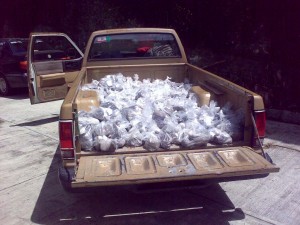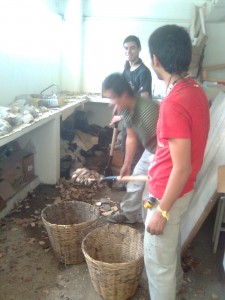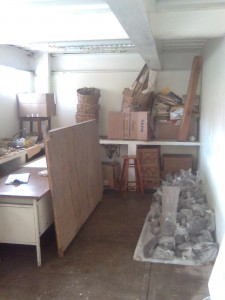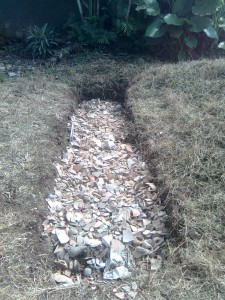After receiving our transport permits from the Consejo de ArqueologÃa (which is a board of 11 eminent archaeologists who regulate the practice of our discipline in Mexico), we embarked on the difficult task of moving all the ground stone we collected during the survey. We loaded 442 tagged bags and 10 individual fragments in two trips from Villa Emiliano Zapata to Xalapa (approximately a two-hour round trip). Fortunately, Rodolfo Parra RamÃrez and his undergraduate students had spent a week cleaning and emptying a lab at the Anthropology Institute of the Universidad Veracruzana, which generously granted us access to its facilities.
Cleaning wasn’t that easy. The lab was full of ceramics, ground stone, skeletons, and loads of artifacts from a fascinating archaeological site called Quiahuiztlan, excavated by Mario Navarrete and Ramón Arellanos in the 90s. Our team had to undertake the difficult task of sorting and storing the materials in groups, as well as burying ceramics. Yes, burying.
In Mexico, once analysis is done, archaeologists are supposed to hand in all the artifacts to INAH (National Institute of Anthropology and History). However, their storage spaces were filled decades ago, so the proposed and accepted alternative was to create pottery cemeteries. Students dug a pit and poured all the sherds in there, covering everything afterwards with soil. It is a sad task but storing all the fragments would be impossible. Complete artifacts, human remains, special objects and others were stored and labeled in boxes. Once the room was cleaned up, we were able to place El Carrizal’s artifacts and start analysis. The team has been enlarged by 21 undergraduate Universidad Veracruzana students and Ramiro Vivero, all of them are helping us classifying artifacts and writing reports. Local high-school students are still helping us every after-noon.
Now that everything’s settled, let’s go back to work!






